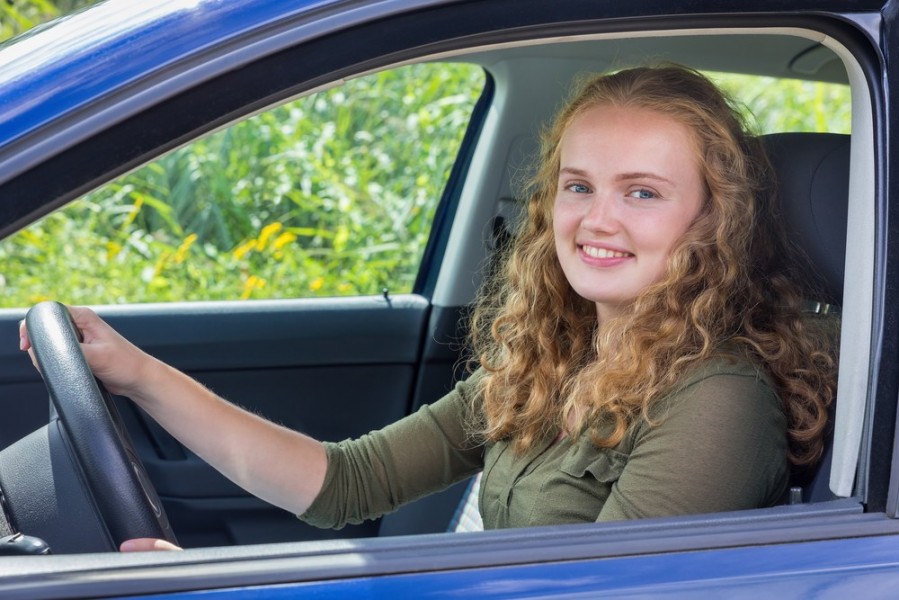Teenage Drivers More Dangerous Now than Ever

Today, more and more teenage drivers are getting into serious, sometimes fatal accidents. At Rice Toyota Collision Center, we hear tragic stories all the time in Greensboro, NC where adolescent drivers kill themselves or others in car crashes.
The statistics are certainly scary. In the United States, there are roughly 18.1 auto-related deaths per 100,000 people. When these numbers are broken down by the driver's age, one group really stands out. Male drivers ages 15-24 have 48 auto-related deaths per 100,000 people, a rate 2.5 times above the national average. These figures reveal that although overall improvement is needed, young male drivers are in serious need of more attention and possibly ongoing education to change this high statistic.
For many of us, earning our drivers' license meant the freedom to go anywhere we wanted. Unfortunately, many things both good and bad come with that freedom. Driving can be fun or it can be stressful, but more importantly, it's fatal for nearly 50,000 Americans every year-- this is why teen driving needs to be taken very seriously.
 Teens make up only 7% of the entire driving population, yet they account for 14% of all road fatalities. Car collisions are the primary cause of death among young people ages 15-19. In 2010 alone, there were 4,877 teen deaths as a result of preventable crashes, based on statistics provided by the National Highway Traffic Safety Administration (NHTSA). At 16 years of age, teen driving inexperience leads to 43.2 crashes per every million miles driven. In comparison, 17-year-old drivers experience 30.3 crashes per each million miles.
Teens make up only 7% of the entire driving population, yet they account for 14% of all road fatalities. Car collisions are the primary cause of death among young people ages 15-19. In 2010 alone, there were 4,877 teen deaths as a result of preventable crashes, based on statistics provided by the National Highway Traffic Safety Administration (NHTSA). At 16 years of age, teen driving inexperience leads to 43.2 crashes per every million miles driven. In comparison, 17-year-old drivers experience 30.3 crashes per each million miles.
Here are some tips for parents of teen drivers, to help them educate their teens and help reduce teen driving anxiety.
· Be a great role model! This means always wear your seatbelt, never be on your cell phone while driving, and don't ever be an aggressive driver. Show your teen what safe driving looks like, and don't romanticize violence or anger while driving. Your kids see what you do and will follow your bad behavior.
· Always make sure that your teenagers wear their seatbelts. Stats show that 50% of all teens who died in car crashes last year were not wearing their seatbelts.
· Limit your teenager's night and weekend driving. Teens crash more often after 11pm on weekdays and after midnight on the weekends.
· Make certain that your teen knows that it's ok to call you if they are ever in trouble and need a ride home. Tell them you won't be angry or upset, no matter what and stick to it.
· Limit the number of passengers in your teenager's car. Remember that the more friends your teen has in the vehicle, the likelihood of getting into an accident increase greatly. Limiting distractions-- such as multiple passengers, cell phones, etc. greatly improves driver safety.
· Limit your teen's driving during the peak accident season, which starts in June when schools generally break for summe, and runs all the way through Labor Day weekend.
Sources: NHTSA, Wikipedia and MADD









 Teens make up only 7% of the entire driving population, yet they account for 14% of all road fatalities. Car collisions are the primary cause of death among young people ages 15-19. In 2010 alone, there were 4,877 teen deaths as a result of preventable crashes, based on statistics provided by the National Highway Traffic Safety Administration (NHTSA). At 16 years of age, teen driving inexperience leads to 43.2 crashes per every million miles driven. In comparison, 17-year-old drivers experience 30.3 crashes per each million miles.
Teens make up only 7% of the entire driving population, yet they account for 14% of all road fatalities. Car collisions are the primary cause of death among young people ages 15-19. In 2010 alone, there were 4,877 teen deaths as a result of preventable crashes, based on statistics provided by the National Highway Traffic Safety Administration (NHTSA). At 16 years of age, teen driving inexperience leads to 43.2 crashes per every million miles driven. In comparison, 17-year-old drivers experience 30.3 crashes per each million miles.
Social